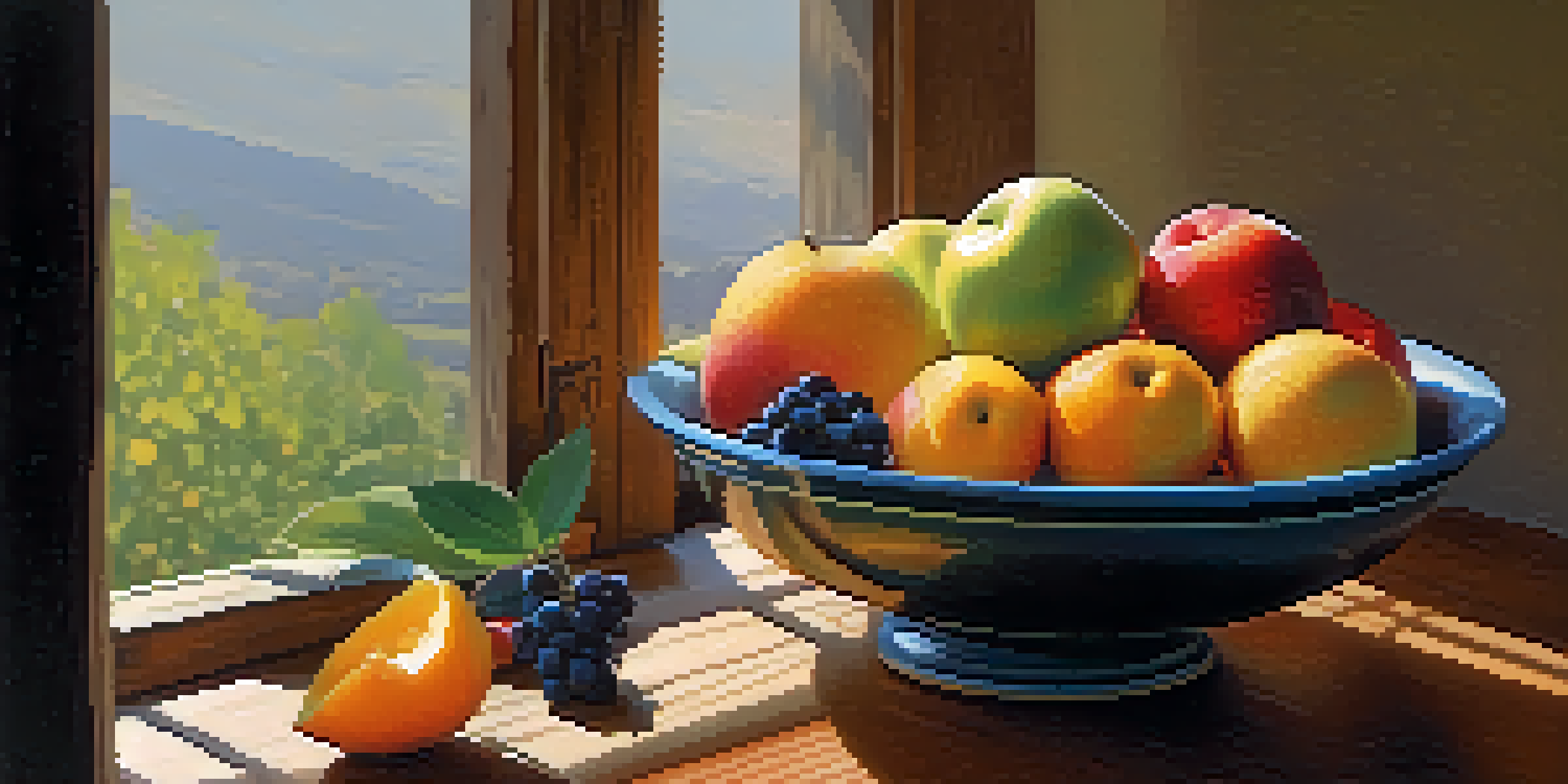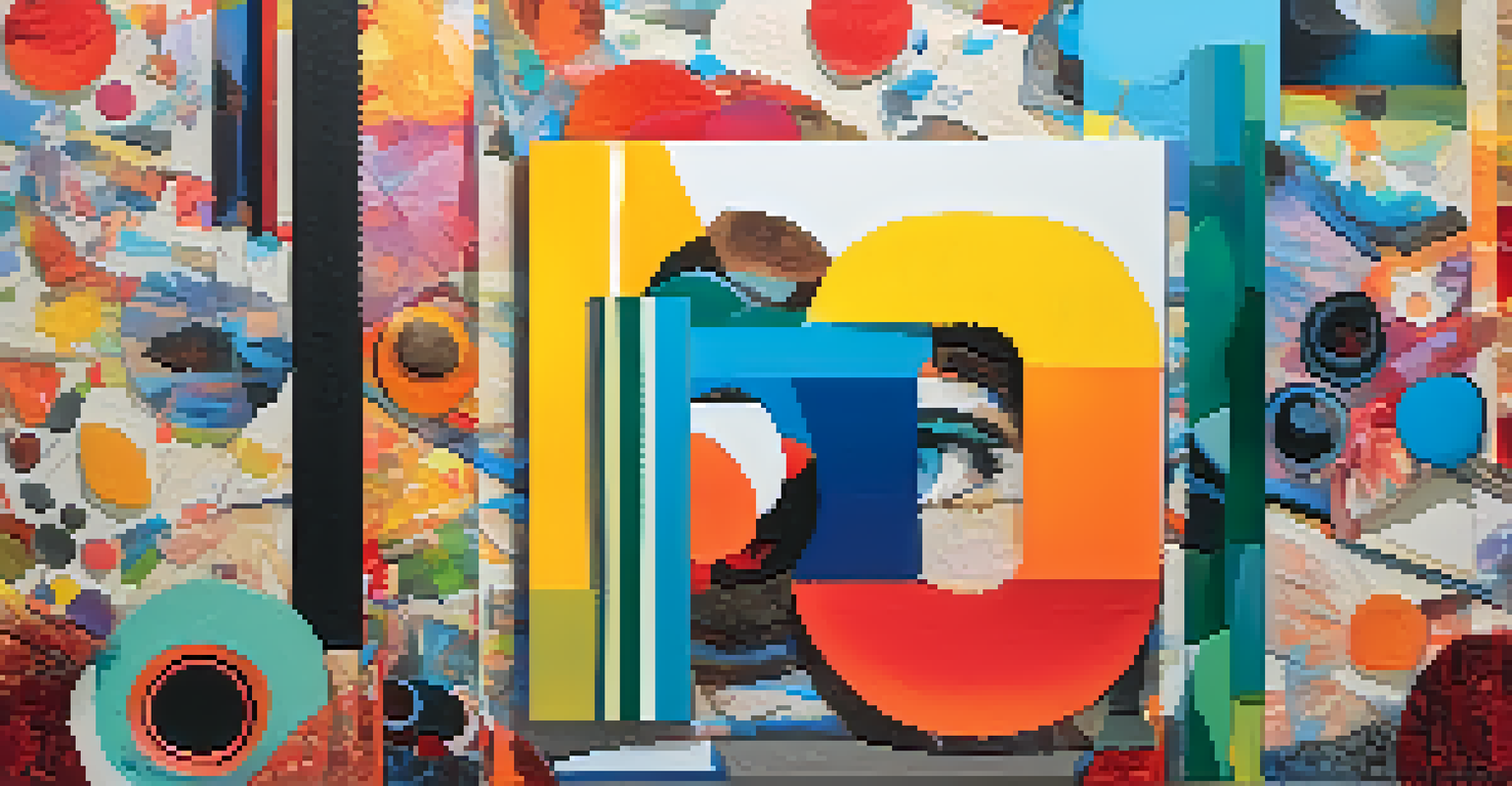Exploring Different Painting Styles for Young Artists

Understanding the Basics of Painting Styles
Painting styles can be as diverse as the artists who create them. From realism to abstract, each style offers a unique way to express emotions and ideas. Understanding these styles helps young artists find their voice and develop their skills.
Every artist was first an amateur.
For instance, realism focuses on depicting subjects as they appear in real life, while abstract art emphasizes shapes, colors, and forms rather than recognizable objects. This variety allows artists to explore different perspectives and techniques.
Encouraging young artists to experiment with various styles can spark creativity and foster a love for art. It’s all about discovering what resonates with them and expressing their individuality through their work.
The Beauty of Realism in Painting
Realism is all about capturing the world as it is, with great attention to detail. This style allows young artists to hone their observational skills while appreciating the beauty in everyday life. Think of it as a way of stopping time to showcase fleeting moments.

For example, a young artist might paint a still life of fruit on a table, focusing on the colors and shadows that make the scene come alive. This practice not only improves their technical skills but also deepens their understanding of light and perspective.
Diverse Painting Styles Inspire Artists
Exploring various painting styles helps young artists find their unique voice and fosters creativity.
Realism can be challenging, but it’s also incredibly rewarding. When young artists see their work closely resembling the subject, it boosts their confidence and inspires them to tackle more complex projects.
Exploring Impressionism for Young Creatives
Impressionism is an exciting style that encourages artists to capture a moment in time, often using loose brushwork and vibrant colors. This approach allows young artists to express their feelings about a scene rather than focus on intricate details. Imagine painting a sunset with swirling colors that reflect the emotion of the moment.
Art is not freedom from discipline, but disciplined freedom.
An excellent way to introduce young artists to impressionism is through outdoor painting sessions, where they can observe changing light and scenery. This experience can be liberating, as they learn to let go of precision and embrace spontaneity.
By exploring impressionism, young artists can develop their unique style while enjoying the process of painting. It invites them to see the world from different viewpoints, fostering creativity and imagination.
Diving into Abstract Art for Self-Expression
Abstract art is all about breaking the rules and expressing emotions through colors, shapes, and forms. This style invites young artists to let go of representational accuracy and instead focus on conveying feelings and ideas. Think of it as a dance between colors on the canvas.
Young artists can explore abstract techniques by using different tools, like sponges or palette knives, to create textures and movement. This experimentation can lead to unexpected outcomes, encouraging them to embrace mistakes as part of the creative process.
Realism Enhances Observation Skills
Practicing realism allows young artists to improve their observational skills while appreciating everyday beauty.
Working with abstract art helps youngsters build confidence and trust their instincts. It allows them to communicate in ways that words cannot, making it a powerful form of self-expression.
The Joy of Watercolor Painting Techniques
Watercolor painting is a delightful medium that many young artists enjoy. Its fluidity and transparency allow for experimentation with washes, gradients, and layering techniques. Imagine painting a soft landscape where colors blend seamlessly into one another.
Young artists can start with simple exercises like wet-on-wet or wet-on-dry techniques, which showcase the unique qualities of watercolors. These methods encourage exploration and help them understand how water and pigment interact.
The unpredictability of watercolor can be both a challenge and a joy. As young artists learn to navigate this medium, they discover the beauty in spontaneity and develop a deeper appreciation for the art of painting.
Exploring Acrylics: Versatile and Vibrant
Acrylic painting is a fantastic choice for young artists due to its versatility and quick-drying properties. This medium allows for a range of techniques, from thick impasto to thin washes, opening up a world of creative possibilities. It’s like having a toolbox filled with endless opportunities for expression.
For instance, young artists can create textured landscapes by layering acrylics or experiment with blending colors to achieve vibrant effects. This hands-on approach encourages them to push their boundaries and try new ideas.
Nature Sparks Artistic Inspiration
Encouraging young artists to observe nature and daily life fuels their creativity and artistic expression.
Acrylics are also forgiving, as mistakes can be painted over easily. This quality helps build confidence in young artists, allowing them to explore without fear of ruining their work.
Incorporating Mixed Media for Unique Creations
Mixed media combines various artistic materials and techniques, encouraging young artists to push their creativity even further. This style allows them to blend painting with collage, photography, and even fabric, resulting in one-of-a-kind artworks. Imagine a canvas adorned with paint, magazine cutouts, and textured elements all coming together.
Young artists can experiment with different combinations, using materials that resonate with them. This exploration not only enhances their skills but also fosters innovation and original thinking.

By incorporating mixed media, young artists discover that art has no boundaries. This freedom inspires them to create unique narratives through their work, celebrating their individuality in the process.
Finding Inspiration in Nature and Everyday Life
Nature and everyday life provide endless inspiration for young artists. Whether it’s a blooming flower in the garden or a bustling street scene, these moments can spark creativity and lead to beautiful artwork. Encouraging young artists to observe their surroundings helps them develop a keen eye for detail.
For example, taking a sketchbook on a nature walk can motivate them to capture the colors and shapes they encounter. This practice not only sharpens their skills but also fosters a deeper connection to the world around them.
Ultimately, finding inspiration in daily life and nature encourages young artists to express their unique perspectives. It reminds them that art is everywhere, waiting to be explored and celebrated.